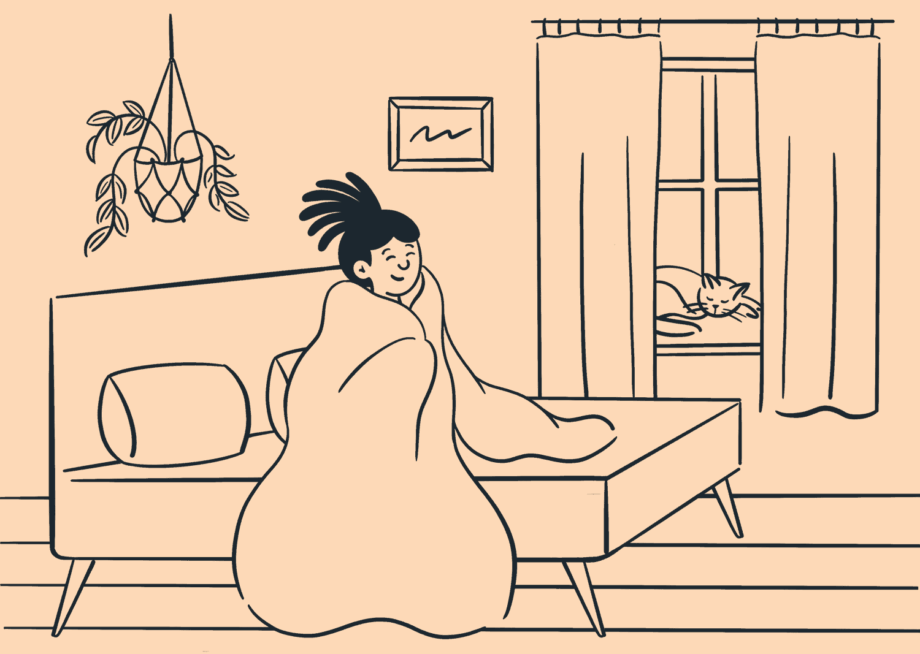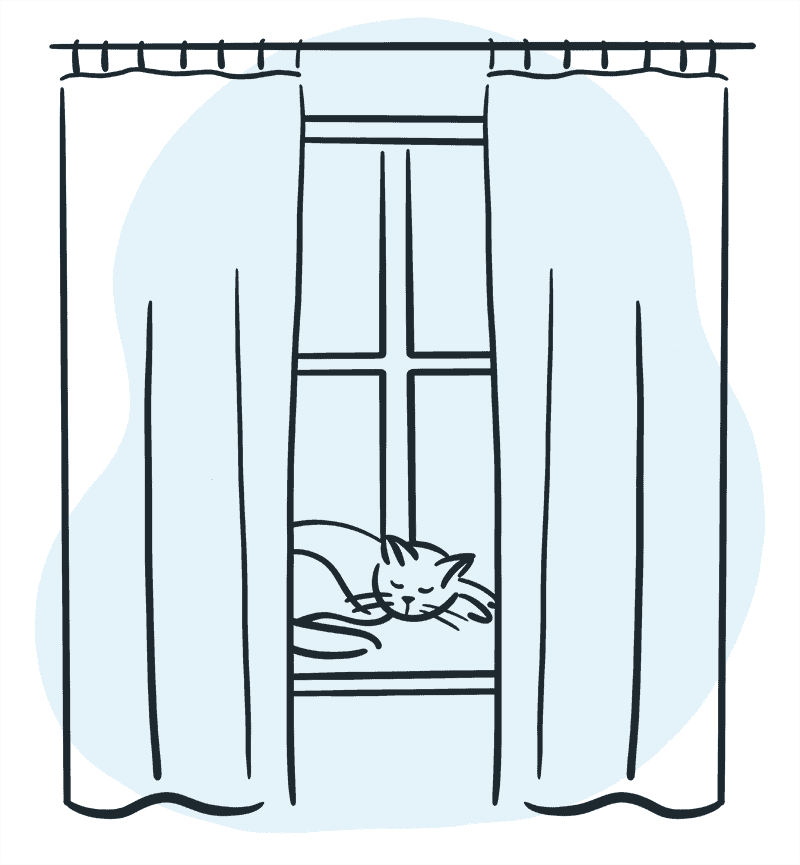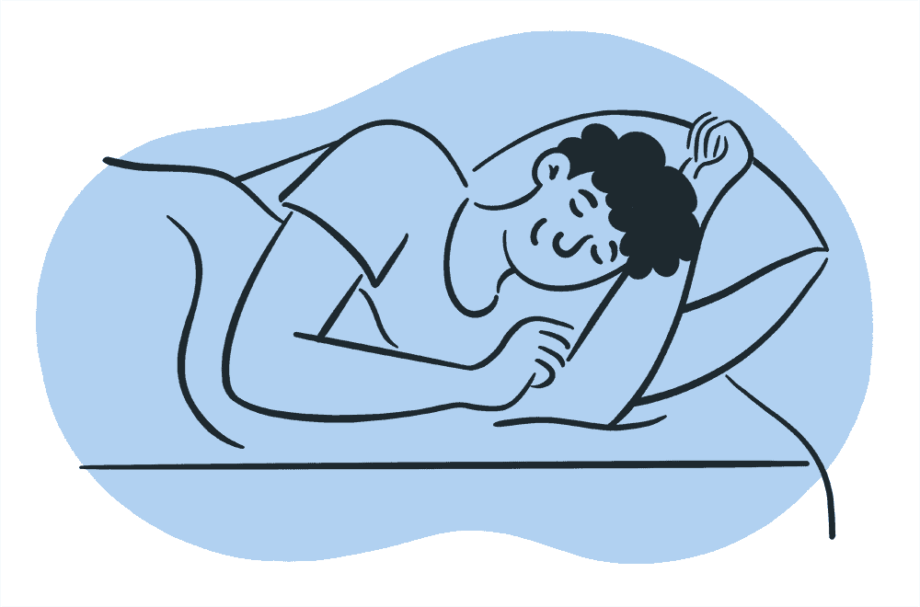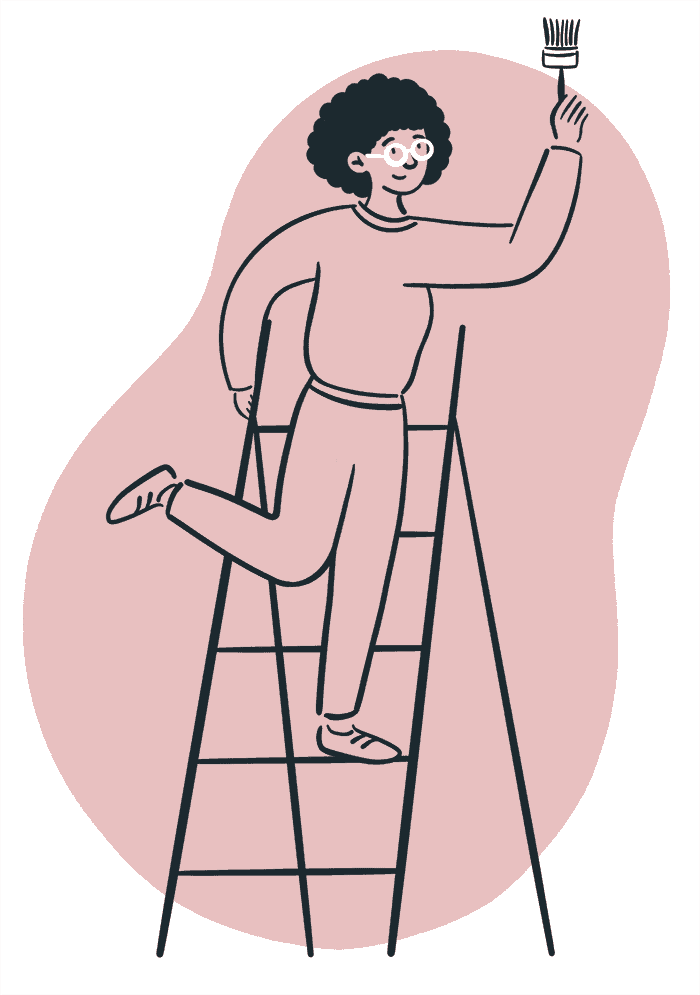Sleeping Green
Disclosure: By clicking on the product links in this article, Mattress Nerd may receive a commission fee at no cost to you, the reader. Read full disclosure statement.
You may be familiar with the term “green living” or “green building” But have you heard of sleeping green?
What Does It Mean to Sleep Green?
To live green means to adopt a sustainable approach to living that attempts to reduce your impact on the earth’s natural resources. Green building is the process of planning, designing, constructing and maintaining structures that are environmentally responsible and resource-efficient. Sleeping green takes both these concepts and applies them to your sleep environment.

By taking steps to “green up” your sleep space, you can help reduce the amount of greenhouse emissions, also known as your carbon footprint.
Greenhouse gases are a major cause of global warming and climate change. While greenhouse gases can occur naturally in the atmosphere, many are man-made. The number of man-made gases has increased exponentially since the industrial revolution. If efforts are not made to cut back on greenhouse gases soon, our oceans, weather, food supply and health will suffer.
Adopting a green sleep practice is one way you can do your part to save the earth. Whether you choose to make a few minor improvements or a complete overhaul, sleeping green can have a positive impact on the natural environment. Let’s go over six ways you can live sustainably – even in your sleep.
Six Ways to Create a Sustainable Sleeping Environment
#1 Consider Your Lighting
The largest source of man-made greenhouse gasses comes from the burning of fossil fuels to make electricity. Electricity is to blame for nearly half of our carbon footprint, with 17 percent due to lighting alone. While artificial light is a necessary part of our lives, some adjustments can benefit both your sleep and the planet.
Tips for Sustainable Lighting
- Embrace natural light. A healthy dose of natural daylight can do wonders for your attitude but also for your sleep and wakefulness. A study comparing a group of volunteers who worked in sunlight to a group who worked in artificial light proved this theory. The daylight group reported feeling less sleepy and slept better at night. That’s because our circadian clocks respond to sunlight, waking us when the sun is up and making us feel sleepy after it goes down. Another advantage of natural sunlight is that it saves electricity.
- Upgrade your incandescent bulbs with LED or CFL lighting. LED (light-emitting diodes) lamps and tubes not only last longer than incandescent bulbs, but they also consume just a fraction of the energy. There are also CFL (compact fluorescent light) bulbs, which is another long-lasting option that uses 25-80 percent less energy than traditional incandescents. Do be aware that both LED and CFL lights emit significant amounts of blue light, which can stimulate the brain and interfere with sleep if used excessively. For this reason, it’s best to turn out LED or CFL lights about two hours before bedtime.

#2 Upgrade Your Home’s Structural Energy Efficiency
Our homes are major greenhouse gas offenders. Much of the heat we lose in our houses escapes through poorly insulated attics or roofs, improperly placed vents, or cracks in windows or basements. Fixing these issues can be easier than you realize.
Tips For Energy Efficiency

Invest in curtains. Windows are a great source of daylight. But if artificial light streams into your bedroom at night, such as from a floodlight or lamppost, be sure to invest in blackout shades or drapes. They can also help keep out drafts on cold nights.
- Draft-proof doors and windows. Heat gain and heat loss through windows take up 25-30 percent of residential heating and cooling energy use. If you don’t want to go to the expense of replacing your windows you can update your existing ones by caulking and weatherstripping around them, adding solar control film, or installing exterior awnings or blinds.
- Try eco-friendly insulation alternatives. Having a well-insulated home is important. It reduces heat flow which, in turn, reduces the amount of energy required to heat or cool your home. But some synthetic insulation contains toxic chemical flame retardants, formaldehyde and VOCs, which may pose health risks. For a greener alternative, look for eco-friendly insulation products made with wool or cotton.
- Consider HVAC upgrades or alternatives. Newer forced-air HVAC systems are far more energy-efficient than older models. But if you’re looking to replace yours, consider some greener alternatives such as geothermal heat pumps, natural gas, pellet stoves, solar heating, and under-floor heating.
#3 Improve Your Air Quality
Dust, ragweed and pet dander can trigger or worsen allergy and asthma symptoms and make sleep feel like an impossible dream. You’d be amazed how small adjustments can reduce the allergens in your home and improve your sleep.
Tips For Better Air Quality

Set out indoor plants. Plants do the exact opposite of what our bodies do. They release oxygen and absorb carbon dioxide. This helps freshen the air and eliminates harmful toxins, making plants “green” in more ways than just their color.
- Make your home resistant to mold. The mere mention of the word “mold” makes most people cringe, and for good reason. Mold can grow anywhere, is costly to fix, and can produce allergens, irritants and, sometimes, toxins that can harm your health. Mold can also interfere with sleep. Eliminate mold risks by drying wet areas immediately, using proper ventilation, monitoring your home’s interior humidity, and using mold-resistant Sheetrock and paint.
- Change out your air filters regularly. Air filters capture dust, mold and fungal spores, pet dander and a host of other particulate pollution floating around your home. If you fail to change your filters regularly (at least once a quarter) the air circulating within your home may trigger allergies. Plus, clogged filters cause your HVAC system to run less efficiently and drive up the cost of heating and cooling your home.
#4 Upgrade Your Sleep Environment
We think of our beds as our safe haven. But some of the materials used in your mattress, bedding, or even your bed may not be as non-toxic or eco-friendly as you think. Making a few upgrades to your sleep environment can ease your mind and help you sleep better.
Tips For Creating an Eco-Friendly Sleep Space
- Take a close look at your bedroom furniture. Upholstered headboards and furniture made with engineered wood products using adhesives can release toxins such as formaldehyde, chemical flame retardants and VOCs. Green furniture offers a more sustainable, eco-friendly and healthier alternative, such as furniture made from solid hardwood like ash, maple, poplar or oak. When it comes to upholstery, look for pieces with 100 percent natural latex. Natural latex is durable, naturally flame retardant and resistant to mold, mildew and dust mites. Furniture made with these materials may cost more, but they will also hold up better over time.
- Wrap yourself in breathable bedding. Sleeping green is comfortable and eco-friendly. Sheets and blankets made with cotton and wool are naturally breathable. Cotton is known for its cool crispness, making it a great choice for hot sleepers and for sleeping in warmer weather. Wool is naturally moisture-wicking and can help you stay dry especially if you’re prone to night sweats.

Invest in an eco-friendly mattress. Your body comes in contact with your mattress an average of eight hours each night. You don’t want to be rolling around in a mattress that contains harmful chemicals.
#5 Explore Your Decor
There’s bound to be items lying around your home that no longer serve a purpose. Decluttering your space can actually help reduce stress and anxiety and lead to better sleep. Doing so with a focus on sustainability can help reduce your carbon footprint as well.
Tips For “Greening Up” Your Decor
- Embrace “eco-minimalism.” Minimalism is the act of living with only the things you need. It’s already good for the environment because when you reduce what you consume, you also reduce the resources that are needed to produce those items. Eco-minimalism takes the practice a step further by intentionally incorporating sustainable or ethical measures to protect the environment. One example of eco-minimalism is reducing the amount of single-use products you use. So next time you’re during your nighttime routine, consider making quick changes like swapping out face wipes for machine washable make-up remover pads or trying green alternatives like a bidet attachment instead of going through all those rolls of toilet paper each week. These are some simple examples of ways you can make an impact before your head hits the pillow at night.
- Consider creative reuse of items you don’t need. Upcycling is simply the creative reuse of unwanted items or even trash and, using your DYI (do-it-yourself) skills, making them into something of higher quality. For example, attaching old mason jars to a board and creating a mason jar herb garden or turning your old plastic shopping bags into a hammock.

- Apply a fresh coat of paint to your walls. It’s not uncommon for a fresh coat of paint to release odors, but paint can also emit VOCs, volatile organic compounds, considered an indirect greenhouse gas. These chemicals from fresh paint can also cause short-term health problems including headaches, dizziness, runny nose, and itchy eyes. Try giving your walls a fresh coat of paint using eco-friendly paints that don’t contain hazardous chemicals or gases, such as low- or no-VOC paint options.
- Shop local. The benefits of shopping locally are far-reaching. When you purchase products at locally-owned businesses rather than national chains, it helps boost your local economy. Businesses benefit as does the local tax base. Plus, the more jobs retained in your local community means fewer people have to commute to work, which translates to less traffic and pollution. So next time before heading to your go-to chain to get an eye mask or new bedtime tea, consider going to a local boutique or checking out products from your neighborhood farmers market instead.
- Recycle your old mattress. If you decide to swap out your old mattress for a newer, more sustainable one, look into recycling your old mattress. More than 50,000 mattresses are tossed out daily in the United States and most end up in landfills. However, more than 80 percent of the materials in old mattresses can be recycled, including foam padding, cotton, steel springs and wool. Wool is also completely biodegradable, which means if you invest in a wool mattress, you have peace of mind knowing the material will not take up space in a landfill.
- Look for eco brands. When you seek out and shop from companies that sell environmentally conscious products, you help them stay in business, where they can continue to work within a smaller carbon footprint.
More than two-thirds of North American shoppers prefer eco-friendly products, according to a study by IBM and the National Retail Federation.
#6 Upgrade Your Flooring
Investing in sustainable flooring is another eco-friendly step you can take in your quest to sleep greener. Some things to consider when looking for eco-friendly flooring include the manufacturing process, the impact of the supply chain on the environment, the use of natural resources and whether the flooring can be recycled.
Some sustainable flooring options include:
- Wood is not only natural, it’s a renewable material. Fewer raw materials are used in creating them, and they also require less energy and natural resources to produce.
- Recycled hardwoods are another good choice. Just ensure they have not been treated with any toxic chemicals during the flooring’s lifetime.
- Bamboo flooring is growing in popularity because it is safe, durable and eco-friendly.
- Cork is not just for wine bottles. Cork is made from renewable sources and is also naturally moisture resistant.
- Wool carpeting is durable and naturally fire-resistant. It’s is also completely biodegradable.
- Recycled metal tiles from scrap pieces of aluminum, copper or brass give these non-biodegradable products a new purpose.
- Linoleum is made from oxidized linseed oil which is produced from flax plants. Linoleum floors have a minimal impact on the environment. They’re also durable and can last for up to 40 years.
- Natural stone flooring is a natural product of the Earth and is constantly being recreated by the planet’s tectonic processes. The biggest environmental impact with stone comes in the transportation of the heavy stones, especially if they are imported.
The Takeaway
Improving your sleep hygiene by creating a sustainable and eco-friendly sleeping environment can have far-reaching benefits not just on the environment, but on your sleep and well-being as well. Not only will your sleep environment have fewer chemicals and VOCs floating around in it, but you’ll also rest better with the peace of mind knowing you are making efforts to shrink your carbon footprint.
But don’t feel like you have to make sudden and dramatic changes in order to sleep green. It’s much easier and affordable to make a few changes over time. A great place to start is by changing out your light bulbs with energy-efficient ones, replacing your air filters and making a list of some quick swaps you can make to reduce your carbon footprint and conserve the planet.


